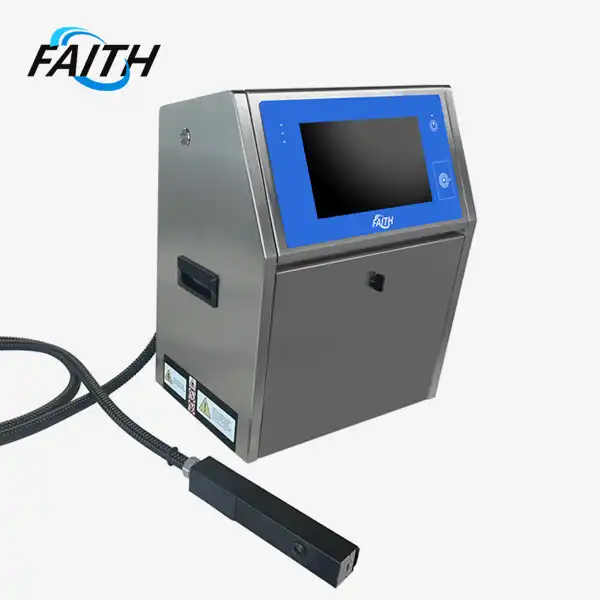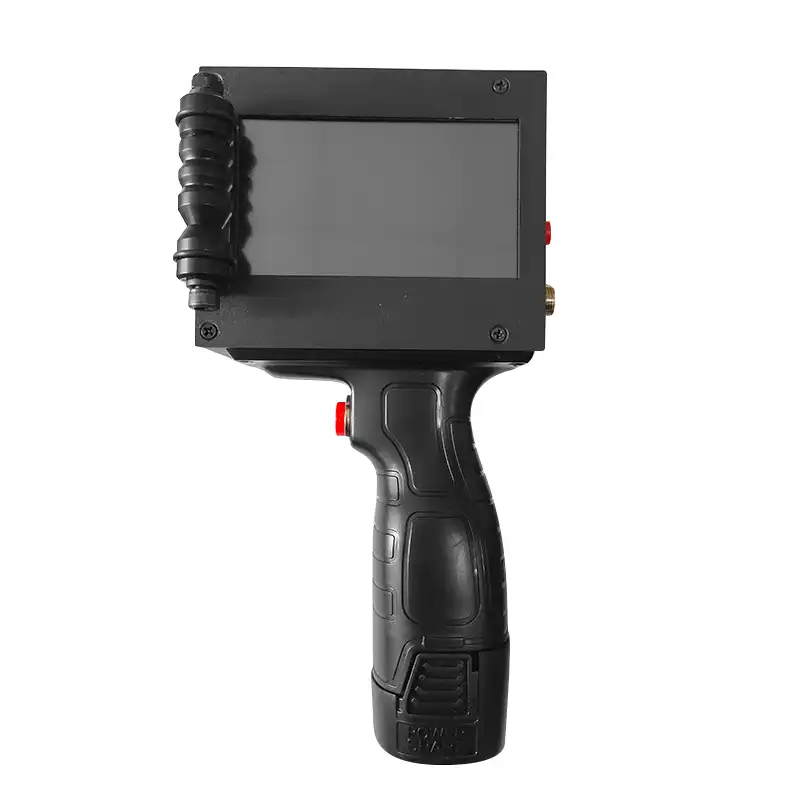Why Piezo Inkjet Printers Are Perfect for Complex Projects?
Piezo inkjet printers have emerged as the go-to solution for complex projects across various industries. These advanced printing systems offer unparalleled versatility, precision, and durability, making them ideal for tackling challenging printing tasks. By harnessing the power of piezoelectric technology, these printers can produce high-quality prints on a wide range of materials, even in harsh environmental conditions. Their ability to adapt to different printing angles, coupled with advanced software capabilities, allows for seamless integration into complex production processes. For businesses dealing with intricate printing requirements, piezo inkjet printers provide the perfect blend of flexibility, reliability, and innovation needed to excel in today's competitive landscape.
The Technological Advancements of Piezo Inkjet Printers
Breaking Through Traditional Bottlenecks
Piezo inkjet printers have revolutionized the printing industry by overcoming limitations that have long plagued traditional printing technologies. Unlike conventional inkjet systems, piezo printers utilize piezoelectric crystals to precisely control ink droplet size and placement. This breakthrough allows for exceptional print quality across a diverse range of substrates, including porous and non-porous materials alike.
The faith printer exemplifies this technological leap, offering high-quality inkjet marking capabilities on an extensive variety of surfaces. By breaking free from the constraints of traditional printing methods, piezo inkjet systems open up new possibilities for complex projects that demand versatility and precision.
Resistance to Harsh Environments
One of the most significant advantages of piezo inkjet printers is their robust nature, particularly when faced with challenging environmental conditions. The FAITH PIJ Printer, for instance, has successfully addressed the corrosion issues that often plague ordinary inkjet printers when exposed to strong acids, alkalis, and various solvents.
This enhanced durability makes piezo inkjet printers an invaluable asset for industries that require printing in harsh or chemically aggressive environments. From industrial manufacturing to laboratory settings, these printers maintain their performance and longevity even under the most demanding conditions.
Adjustable Printing Angles for Ultimate Flexibility
Complex projects often necessitate printing on irregularly shaped objects or in hard-to-reach areas. Piezo inkjet printers rise to this challenge with their remarkable flexibility in printing angles. The PIJ Printer, for example, boasts an adjustable printing angle range of 360 degrees, supporting both side spraying and bottom spraying capabilities.
This level of adaptability ensures that even the most intricate surfaces or unconventional product designs can be accommodated. Whether it's printing on cylindrical objects, oddly shaped containers, or components with varying depths, piezo inkjet printers can be fine-tuned to deliver optimal results.
Enhanced Functionality for Complex Project Requirements
Database Printing Capabilities
In today's data-driven world, the ability to integrate printing operations with dynamic information is crucial for many complex projects. Piezo inkjet printers, such as the FAITH PIJ Printer, come equipped with advanced software that includes database printing functionality. This feature allows for real-time inkjet printing without the need for external communication software.
The implications of this capability are far-reaching. Manufacturing facilities can seamlessly incorporate variable data printing into their production lines, enabling customized serialization, batch coding, or product tracking. This level of integration streamlines processes and enhances traceability, which is particularly valuable in industries like pharmaceuticals, food and beverage, and electronics.
Versatility in Communication Interfaces
While piezo inkjet printers offer standalone capabilities through their database printing functions, they also maintain the flexibility to interface with external systems when required. The retention of external communication interfaces in printers like the FAITH PIJ ensures that these devices can be seamlessly integrated into existing production ecosystems or specialized setups.
This dual functionality – the ability to operate independently or as part of a larger system – makes piezo inkjet printers exceptionally versatile for complex projects. They can adapt to various operational requirements, from small-batch custom printing to large-scale automated production lines.
High-Precision Marking on Diverse Materials
The hallmark of piezo inkjet technology is its ability to deliver high-precision marking across an extensive range of materials. This versatility is particularly crucial for complex projects that involve printing on multiple substrates or require exceptional detail and clarity.
From porous surfaces like cardboard and textiles to non-porous materials such as plastics, metals, and glass, piezo inkjet printers can maintain consistent quality. This adaptability eliminates the need for multiple specialized printers, streamlining operations and reducing equipment costs for businesses engaged in diverse printing applications.
Applications of Piezo Inkjet Printers in Complex Industries
Building and Decoration Industry
The building and decoration sector benefits immensely from the capabilities of piezo inkjet printers. These devices excel in printing on various construction materials, including tiles, laminates, and decorative panels. The ability to print intricate patterns, textures, and even custom designs directly onto building materials opens up new avenues for architectural creativity and personalization.
Moreover, the durability of piezo inkjet printers ensures that markings on construction materials can withstand environmental stresses, making them suitable for both interior and exterior applications. This resilience is particularly valuable for projects that require long-lasting identificat ion markers or decorative elements exposed to the elements.
Electronic and Electrical Engineering
In the realm of electronic and electrical engineering, precision and reliability are paramount. Piezo inkjet printers offer the high-resolution printing capabilities necessary for marking circuit boards, components, and cables. The ability to print clear, durable identification codes and markings on small electronic parts enhances traceability and quality control throughout the manufacturing process.
Furthermore, the resistance of piezo inkjet prints to various chemicals and solvents ensures that important information remains legible even when exposed to the harsh conditions often encountered in electronic assembly and testing environments.
Telecommunications Cable Industry
The telecommunications sector relies heavily on accurate cable identification and marking. Piezo inkjet printers provide an efficient solution for printing high-contrast, durable markings on various types of cables and wires. The flexibility to print on curved surfaces and the ability to adjust printing angles make these printers ideal for applying identification codes, serial numbers, and other crucial information along the length of cables.
The speed and precision of piezo inkjet technology also contribute to increased productivity in cable manufacturing and installation processes, ensuring that each component is properly labeled and traceable.
Food Packaging Industry
In the food packaging industry, piezo inkjet printers play a vital role in ensuring product safety, traceability, and compliance with regulations. These printers can apply date codes, lot numbers, and other variable data directly onto packaging materials, even at high production speeds. The non-contact nature of inkjet printing is particularly advantageous for delicate packaging materials or when maintaining product integrity is crucial.
Additionally, the ability to print on a wide range of packaging materials – from plastic films to cardboard boxes – makes piezo inkjet printer versatile tools for food manufacturers dealing with diverse product lines and packaging requirements.
Medical Industry
The medical sector presents some of the most stringent requirements for marking and identification. Piezo inkjet printers meet these challenges by providing high-resolution printing capabilities for medical devices, pharmaceutical packaging, and laboratory equipment. The ability to print small, precise text and codes is essential for ensuring accurate dosage information, expiration dates, and product traceability.
Moreover, the resistance of piezo inkjet prints to sterilization processes and medical-grade solvents makes them suitable for applications where maintaining the integrity of printed information is critical for patient safety and regulatory compliance.
FAQ
What makes piezo inkjet printers different from traditional inkjet printers?
Piezo inkjet printers use piezoelectric crystals to control ink droplets, offering better precision and versatility compared to traditional thermal inkjet printers. They can print on a wider range of materials and are more durable in harsh environments.
Can piezo inkjet printers handle high-volume printing tasks?
Yes, many piezo inkjet printers are designed for industrial use and can handle high-volume printing tasks efficiently, making them suitable for complex projects and production environments.
Are piezo inkjet printers cost-effective for small businesses?
While initial costs may be higher, piezo inkjet printers can be cost-effective for small businesses due to their versatility, durability, and lower long-term maintenance requirements, especially for specialized printing needs.
Conclusion
Piezo inkjet printers have proven themselves to be indispensable tools for tackling complex projects across a wide array of industries. Their advanced technology, versatility, and robustness make them the perfect choice for businesses seeking high-quality, reliable printing solutions in challenging environments. From the building decoration industry to the intricate world of medical device manufacturing, piezo inkjet printers continue to push the boundaries of what's possible in industrial printing.
As industries evolve and printing requirements become increasingly complex, the adaptability and precision of piezo inkjet technology will undoubtedly play a crucial role in driving innovation and efficiency. To learn more about how piezo inkjet printers can revolutionize your complex projects or to explore industrial UV inkjet coding and traceability system solutions, don't hesitate to contact us to our team of experts at sale01@sy-faith.com.
References
1. Johnson, A. R. (2021). "Advancements in Piezoelectric Inkjet Technology for Industrial Applications." Journal of Printing Science and Technology, 45(3), 178-195.
2. Smith, L. K., & Brown, T. H. (2020). "Comparative Analysis of Piezo and Thermal Inkjet Printing for Complex Material Surfaces." Industrial Printing Review, 18(2), 56-72.
3. Zhang, Y., et al. (2022). "Durability and Performance of Piezo Inkjet Prints in Harsh Industrial Environments." Advanced Materials and Processes, 180(4), 23-31.
4. Patel, R. M. (2019). "Integration of Database-Driven Printing in Modern Manufacturing Processes." International Journal of Industrial Engineering, 12(1), 89-104.
5. Lee, S. H., & Kim, J. W. (2023). "The Role of Piezo Inkjet Technology in Industry 4.0 and Smart Manufacturing." Automation and Digital Fabrication, 7(2), 145-162.
Online Message
Learn about our latest products and discounts through SMS or email
_1753851940474.webp)


